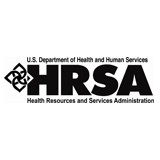Ryan White Program Addressing Coinfection with Viral Hepatitis
 For many years the Health Resources and Services Administration’s (HRSA) HIV/AIDS Bureau (HAB) has worked to increase access to hepatitis C treatment for HIV-infected patients in Ryan White-funded programs.
For many years the Health Resources and Services Administration’s (HRSA) HIV/AIDS Bureau (HAB) has worked to increase access to hepatitis C treatment for HIV-infected patients in Ryan White-funded programs.
This attention is warranted given that, according to the Action Plan for the Prevention, Care and Treatment of Viral Hepatitis, an estimated 33% of persons living with HIV are coinfected with the hepatitis B virus (HBV) or hepatitis C virus (HCV). Further, the progression of viral hepatitis is accelerated among persons with HIV; therefore, persons who are coinfected with HIV and HCV experience greater liver-related health problems than non-HIV infected persons. The CDC also notes that while “antiretroviral therapy has extended the life expectancy of people living with HIV (PLWH), liver disease—much of which is related to hepatitis B and C infection—has become the leading cause of non-AIDS-related deaths among this population.”
Hepatitis C Treatment Expansion Initiative
One important initiative is the Hepatitis C Treatment Expansion Initiative of Chester, Pennsylvania, and Siouxland Community Health CenterExit Disclaimer of Sioux City, Iowa. They shared their rationales for integrating HCV treatment into their practices, highlighted steps they took to develop and begin delivering these services, discussed clinical issues about HCV treatment, and shared lessons learned.
The University of South Florida, which has a cooperative agreement to serve as the training and evaluation centerExit Disclaimer provided an overview of HCV and HIV coinfection, addressed elements of a successful HIV/HCV program, and highlighted four models of care delivery being used by the SPNS grantees:
- Primary care delivery with expert back-up
- Integrated care without a designated HCV clinic (expert consultation used for severe complications)
- Integrated care with a designated internal HCV clinic
- Co-located care with specialist who manages treatment at Ryan White clinical site
Outcomes to be measured across all sites include the number of HIV/HCV co-infected patients treated or not treated for hepatitis C, barriers to treatment, sustained virologic response, services utilization, and cost; grantees are also encouraged to conduct projects designed to investigate local issues that affect HCV treatment in their populations.
Project ECHO™ Adapted by Ryan White Grantees
Project ECHOâ„¢Exit Disclaimer (Extension for Community Healthcare Outcomes) is a telehealth program developed by the University of New Mexico to increase access to specialty care for individuals living with hepatitis C, HIV, addiction, chronic pain, complex diseases, rheumatologic disorders, and terminal illness, among others. Several Ryan White grantees are among the organizations around the country that have adopted Project ECHO™ to improve access to specialty medical care.
For example, Community Health Center, Inc., of ConnecticutExit Disclaimer (CHCI) launched a telemedicine model in January 2012 to expand hepatitis C and HIV treatment throughout its entire network of health centers. Each remote site has a local champion who gets CME (continuing medical education) credits and training experience in hepatitis C and HIV by participating in weekly calls with the central expert team via videoconference technology. CHCI shared that some of the challenges in implementing this telehealth model have been primary care providers lacking sufficient time to invest in weekly calls, lack of expertise in hepatitis C or HIV care, high turnover rate of providers, and patient trust in the model. However, several mid-level providers (nurse practitioners and physician assistants) have become the “ECHO-ist” for their clinical site and have proven to be a committed group of providers, particularly around hepatitis C care and treatment.
In addition to clinical collaboration, Project ECHO™ and AIDS Education and Training Centers (AETCs) are working together to increase access to hepatitis C care and treatment. The Northwest AETCExit Disclaimer, managed out of the University of Washington, launched an ECHO™ program in 2009, which now supports expanded care for hepatitis C, HIV, addiction, pain, and complex diseases for individuals living in Washington, Alaska, Idaho, Oregon, and Montana. There are 20-25 active clinical sites that review 15-18 cases of hepatitis C on a weekly basis. Since its inception, about 400 hepatitis C patients have been reviewed by the expert team. Qualitative data suggests that participants enjoy project ECHO, and clinical outcomes have been similar to the existing literature.
One clinical site working with the Northwest AETC is Idaho State University’s (ISU) Department of Family Medicine, which is also a recipient of the SPNS Hepatitis C grant. ISU has expanded its provider education around hepatitis C and increased the numbers of patients treated. Of the 120 HIV+ patients at ISU, 20 are HCV antibody positive. Since beginning their treatment program, 6 patients have completed treatment (5 sustained virologic response, 1 relapse), and 4 others are currently on therapy. They are now planning to launch expanded hepatitis C screening based on the revised CDC recommendations, which call for a one-time HCV test for all “baby boomers.”
These are just a few of examples of approaches underway across the Ryan White HIV Program to address viral hepatitis. As we continue our efforts to deliver high quality HIV care to clients and collaborate with federal colleagues to implement the Viral Hepatitis Action Plan, we will continue to share information about successful approaches that can be adapted by others both in and beyond the Ryan White network.HAB colleagues Adan Cajina, MPH; Diana Travieso Palow, MPH, MS, RN; Tracy Matthews, MHA, RN; Marlene Matosky, MPH, RN, and the Ryan White grantees mentioned in the article also contributed to this post.